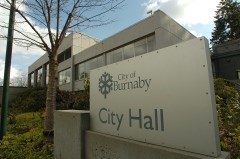While the city has come under fire in recent years for how it’s handled housing issues in Burnaby, local politicians are hoping a new housing profile will quiet some of their loudest critics.
The 100-page report, which was presented at this week’s council meeting, provides an overview of housing in Burnaby, including information on policies, programs and results.
According to the report, Burnaby has the third largest non-market housing inventory in the province, comprised of over 5,900 units that includes housing co-ops, public housing, and non-profit housing.
The housing profile includes some of the actions the city has taken in the area of non-market housing, including the recent proposal for 181 non-market housing units related to the Cedar Place development, construction of 390 units built through the affordable units policy, and the development of city-owned lands leased for seven non-profit and cooperative housing projects, which resulted in 302 non-market rental units.
The city also has 32,000 market rental housing units, and another 90,000 housing units of market homeownership. Burnaby has also added nearly 5,000 units of market housing in the last five years.
In market rentals, the profile noted the city has supported the market with the recent redevelopment proposals for 559 purpose built units; 300 units at Brentwood Mall under construction, 21 units at 3700 Hastings Street undergoing rezoning and 238 units at Sussex Avenue/Grange Street site undergoing rezoning.
Mayor Derek Corrigan said the profile shows the city along with other municipalities have been both warning provincial and federal governments for years, and reacting to the housing issues for years. However, he said not much attention has been paid until recently, pointing out the province’s recent announcement of $500 million for affordable housing units.
“For me, it’s a recognition that they haven’t been putting the money in that was necessary to avoid this emergency,” he said.
The report also suggests a lack of funding at the federal and provincial levels for non-market housing and incentives for new rental apartments, while other housing policies have been insufficient for over two decades, making it more challenging for households to find affordable housing options.
“Every opportunity we get, we seize to work with the senior levels of governments to try and establish housing affordability in the community, but we said over and over again, we can’t go it alone,” Corrigan said. “We can’t be put in a situation where the expectations are all on property taxes to be able to support this.”
In recent months, the city and council have taken heavy criticism for the demoviction issue in Metrotown and the demolition of older rental stock to make way for new highrise development.
Once again, the lengthy report attempts to spell out the city’s position, noting the municipalities have no legal position to stop the demolitions.
“From a community planning perspective, new development with increased density permits more housing supply and smaller unit sizes that provide greater affordability and a variety of unit types to more complex proposals and mixed-use projects that may combine uses permitted in different zoning districts,” the report stated.
To read the report, go to burnaby.ca and look under the latest news tab for a link.



